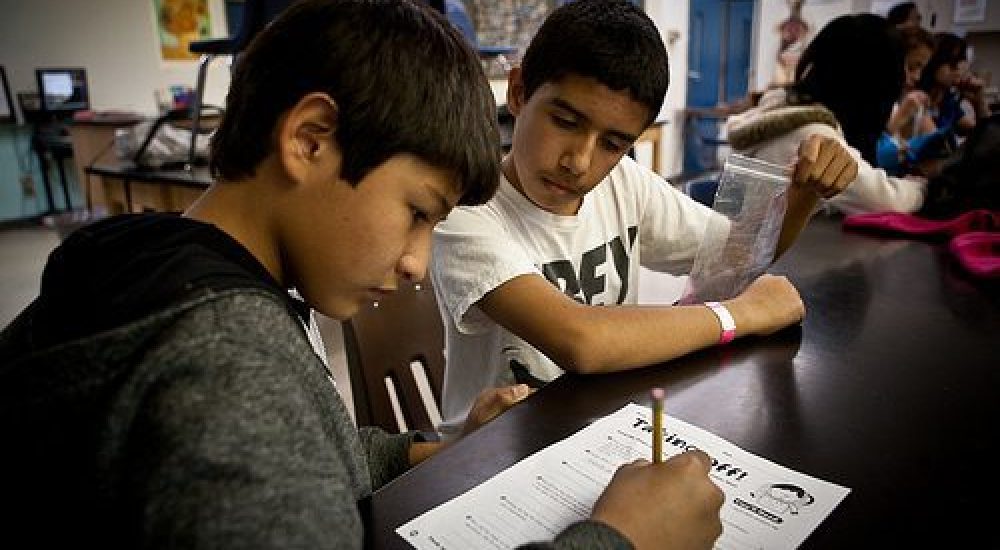I recently presented a workshop on inclusion at the 21st Century Community Learning Center Summer Institute in July.
In preparing for the workshop I spoke with two local 21st CCLC site directors about how they included students with special needs. As the local evaluator I knew that these programs had successfully included students with various disabilities in their programs.
Here are some best practices that I want to share with you:
Port Norris School, small school in rural New Jersey
- 75 kids in program (187 total students in grades 6-8).
- 25%-30% of 21st CCLC students were classified and received Special Education services during the school day.
Philosophy
- We have a philosophy that everyone should feel welcome.
- We host a Back to School Night for 21st CCLC and send the message, “Everyone Belongs.”
- We want parents to know that we’ll take care of their kids.
Staffing/Partners
- We hire people who want to be there, not just for the money.
- Teachers are told to be in the center of the activities not on the sidelines. Aides are told to actively engage in activities not just sit and watch.
- Staff and partners need to treat students with respect and learn how to address individual issues.
- Staff stay 15-20 minutes after the busses leave every day for reflection on the good, the bad, and the ugly.
- Staff who leave early send a daily email. This way staff know what is happening in other classrooms, can be consistent with students, and address issues. The coordinator isn’t blindsided if a parent calls about something that happened in the program.
- We hired a Special Education teacher to help with modifications and do homework the first hour with special education students.
- We hired school day Special Education aides to work in the program with everyone, not just students identified as Special Education.
- We talk with any outside partners in advance, make suggestions for modifications to help students without identifying disability.
- As much as possible we promote consistency among staff and partners working with the students.
Students
- We have student buddies sit with special education students during snack and can help with homework if their own work is done.
- We send the message that the program is a privilege not a right and expect everyone to treat each other with respect.
- Staff react to any situation where kids don’t treat each other with respect, and talk with the offending students about how their actions affect others.
- There is a folder for each student’s afterschool work (using google docs rather than paper) that is shared with parents and school day staff so everyone knows what we’re doing after school.
Lakeside Middle School, large middle school in a medium size town in New Jersey
- 75 students (1131 total student enrollment).
- 50% of 21st CCLC students were classified and received Special Education services during the school day.
Philosophy
- We’re advocates, we should advocate for what the families want and need not what we want for them.
Parent Engagement
- Get to know what time and how to communicate with parents (phone, text, email, in person, letter), consider language, ethnicity, who in in household to call.
- Create an active collaborative committee/community with anyone who wants to get involved, start slow, with a few parents and ask them to bring others, open committee to all school personnel (maybe the custodian has a child in the program.)
- Take the initiative to build relationships. Asking a question like, “How can we help you?” Maybe it’s help with heating bill or job skills. Take the cue from the parents.
Staff
- We hired a teacher with Special Education background to work 5 days a week for the first hour. While students have choice of activities/teachers every day, those students who need consistency gravitate to this teacher. In addition to doing homework she finds out what other skills students need, like how to write out a bus pass correctly. Students of all learning levels choose her class.
School
- We send a list of all students who are participating to all teachers and let them know we’re here to help.
- We figure out the best way to communicate regularly with teachers about behavior and school work.
Partners
- Social work grad students from Drexel University conducted a social skills group, which was targeted to students with autism but attracted other students as well.
The methods described by the two 21CCLC Site Directors illustrate that inclusion is a practice, not a placement. Each Site Director figured out what would work in their school to insure that students with special needs would feel welcome and included in the program. Ultimately, it’s about communication and partnerships, especially with school day personnel and families. Inclusion may look different in your program, but the goal of “Inclusion is Belonging” remains the same. Good luck!
For breakfast on this cool, sunny day in New Jersey, I had oatmeal with craisins and honey for breakfast. I also start each day with a cup of hot water with lemon.
Author Profile: @janesharp
